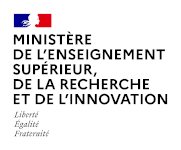`Our Cultural Commonwealth` – The report of the American Council of Learned Societies Commission on Cyberinfrastructure for the Humanities and Social Sciences
The emergence of the Internet has transformed the practice of the humanities and social sciences—more slowly than some may have hoped, but more profoundly than others may have expected. Digital cultural heritage resources are a fundamental dataset for the humanities: these resources, combined with computer networks and software tools, now shape the way that scholars discover and make sense of the human record, while also shaping the way their findings are communicated to students, colleagues, and the general public. Even greater transformations are on the horizon, as digitized cultural heritage comes into its own.
But we will not see anything approaching complete digitization of the record of human culture, removal of legal and technical barriers to access, or revolutionary change in the academic reward system unless the individuals, institutions, enterprises, organizations, and agencies who are this generation’s stewards of that record make it their business to ensure that these things happen.
The organized use of networks and computation for the practice of science and engineering was the subject of a 2003 report to the National Science Foundation (NSF), Revolutionizing Science and Engineering through Cyberinfrastructure.1 In both the NSF report and this one, the term cyberinfrastructure is meant to denote the layer of information, expertise, standards, policies, tools, and services that are shared broadly across communities of inquiry but developed for specific scholarly purposes: cyberinfrastructure is something more specific than the network itself, but it is something more general than a tool or a resource developed for a particular project, a range of projects, or, even more broadly, for a particular discipline. So, for example, digital history collections and the collaborative environments in which to explore and analyze them from multiple disciplinary perspectives might be considered cyberinfrastructure, whereas fiber-optic cables and storage area networks or basic communication protocols would fall below the line for cyberinfrastructure.
Recognizing that a revolution similar to the transformation of science and engineering addressed in the NSF report is inevitable for the humanities and the social sciences and that these disciplines have essential and distinct contributions to make in designing, building, and operating cyberinfrastructure, the American Council of Learned Societies (ACLS) in 2004 appointed a Commission on Cyberinfrastructure for the Humanities and Social Sciences. This report reflects the reach of its sponsoring organization, the ACLS, by focusing on the needs of the humanities and nonnormative social sciences, that is, social sciences that are interpretive.
The ACLS Commission was charged with three tasks:
- To describe and analyze the current state of humanities and social science cyberinfrastructure
- To articulate the requirements and potential contributions of the humanities and social sciences in developing a cyberinfrastructure for information, teaching, and research
- To recommend areas of emphasis and coordination for the various agencies and institutions, public and private, that contribute to the development of this infrastructure






